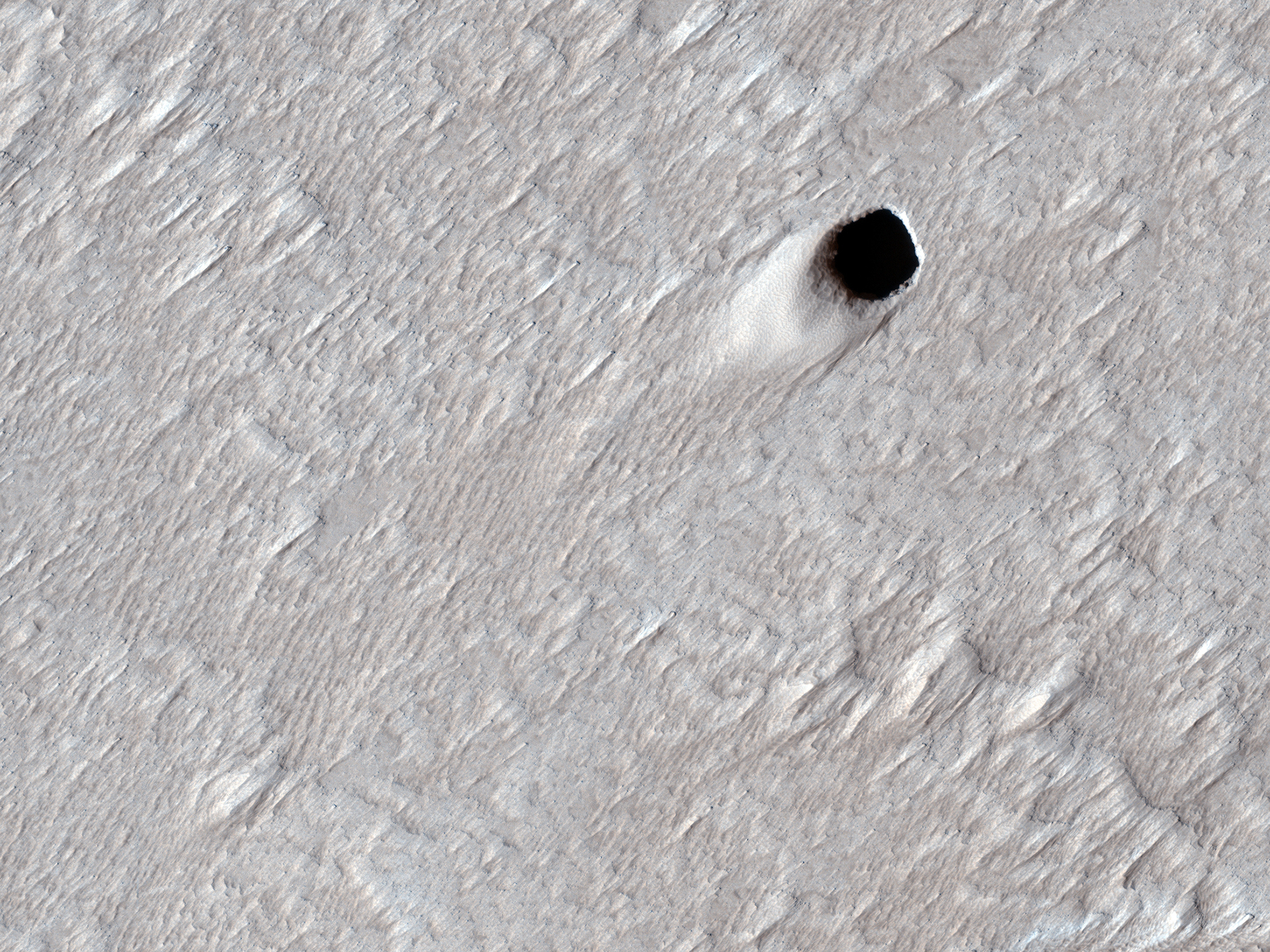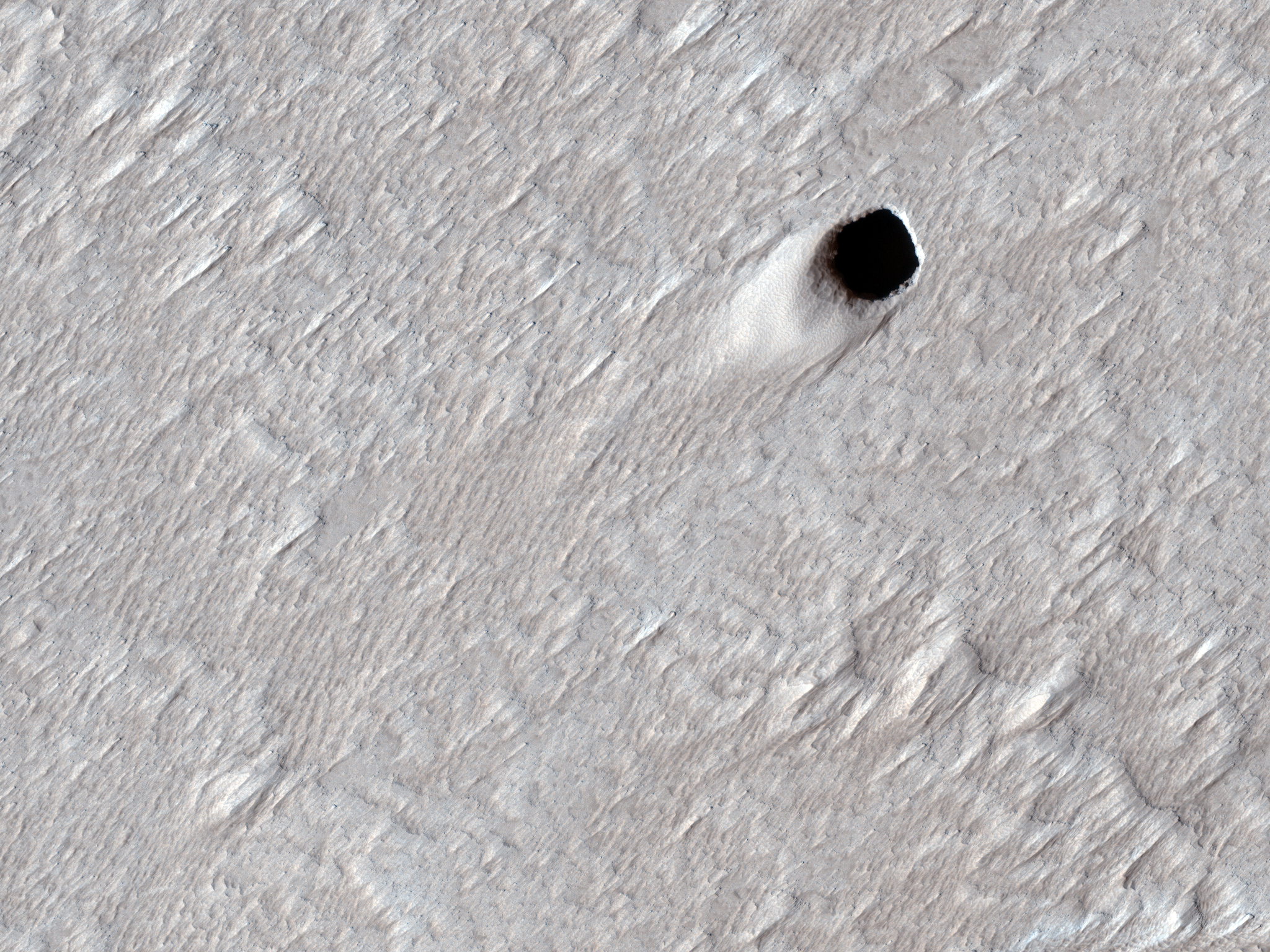HiRISE Spots the Mouth of a Martian Lava Tube

| Credit | NASA/JPL-Caltech/University of Arizona |
|---|---|
| Language |
|
This pit crater was created by an empty lava tube in Mars’ Arsia Mons region. The image was captured by NASA’s Mars Reconnaissance Orbiter on Aug. 16, 2020, using the orbiter’s High-Resolution Imaging Science Experiment, or HiRISE, camera.
The pit is about 150 feet (50 meters) across, so it’s likely that the underground tube is also at least this big – much bigger than similar caves on Earth. HiRISE passes over Mars in the late afternoon, when the inside of the pit is obscured by long shadows.
The University of Arizona, in Tucson, operates HiRISE, which was built by Ball Aerospace & Technologies Corp., in Boulder, Colorado. NASA’s Jet Propulsion Laboratory, a division of Caltech in Pasadena, California, manages the Mars Reconnaissance Orbiter Project for NASA's Science Mission Directorate, Washington.

